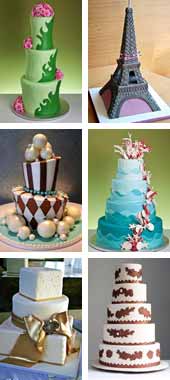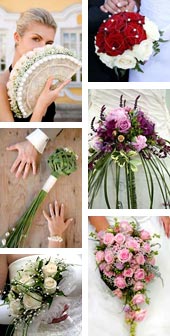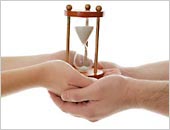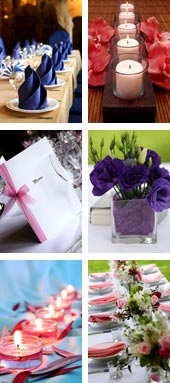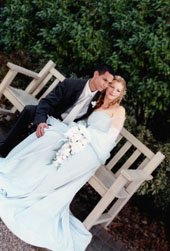The History of Bridal Veils
|
|
|
|
Despite being the fathers of learning and philosophy, the ancient Greeks also placed profound belief in the gods as well as the power of malevolent spirits to affect the everyday lives of people. Not surprisingly, the first recorded use of a bridal veil was in ancient Greece where brides wore veils of bright yellow for protection from evil spirits and curses.
The Romans were no less superstitious and in Rome, the bridal veil gave head to toe protection from evil spirits who might curse a happy marriage. The veil or flammeum was red and often decorated with threads of gold or silver. It was rectangular, sheer and left the face uncovered. Her gown was a white tunic with girdle. Around her waist the `knot of Hercules' gave extra protection from bad luck. The bride's hairstyle was plaited and piled up high.
With the rise of Islam in the 8th Century, the Arab empire stretched from Pakistan to Spain. It was the superpower of the day and its influence spread through the splintered European states, in their music, the arts, science and clothing. When later Crusaders returned from the Holy Land, they brought with them the veil. In medieval times, milky complexions were sought after so the veil served to protect delicate faces from the harshness of the sun. The veil covered the hair, neck and chin and also served to protect married women's modesty.
As time passed, wedding clothing became more ornate with finer cloth and embroidery. The bride's wimple became more refined. During the 1600s, the bride wore a conical headdress with a trailing full-length veil.
In 18th century England, bridal hats became popular: lace trimmed caps, bonnets or hats to accentuate the elaborate hairstyles. The bridal veil returned to England in the early 19th century. Most were of the best lace a family could afford, becoming family heirlooms worn by later generations. Today's brides use lace heirloom veils to accessorize their modern gowns. The use of silk tulle in the 19th century made the wedding veil more sheer and see-through.
Through the early 20th Century and into the 1920's, brides wore tulle veils adorned with wax orange blossom flowers and velvet leaves to match the waist corsage. By the 1930's, veils hung more loosely, complimenting the form-fitting gowns of the day.
In the 1940's, bride's developed a more extravagant veil with half-crown headpieces with rhinestones and wax blossom flowers. The bridal hat also made a comeback often worn with a short tulle veil. In the fifties, brides wore skullcap headpieces in velvet and satin with a circular veil. These veils ranged in length from 18" to 27 long.
During the later sixties came the 'flower child' look, with real flowers worn with the veil. For the most part, veils took on a modern appearance. The emergence of magazines, television and motion pictures meant brides could draw inspiration from designers all over the world, from royal or celebrity weddings. This huge influx of material meant brides could eclectically fashion their own unique wedding look. With all this creativity, the one constant is that the veil prevails. Without it, the wedding gown is just a party frock. With the veil complimenting the gown, the bridal look is complete.
|
|
